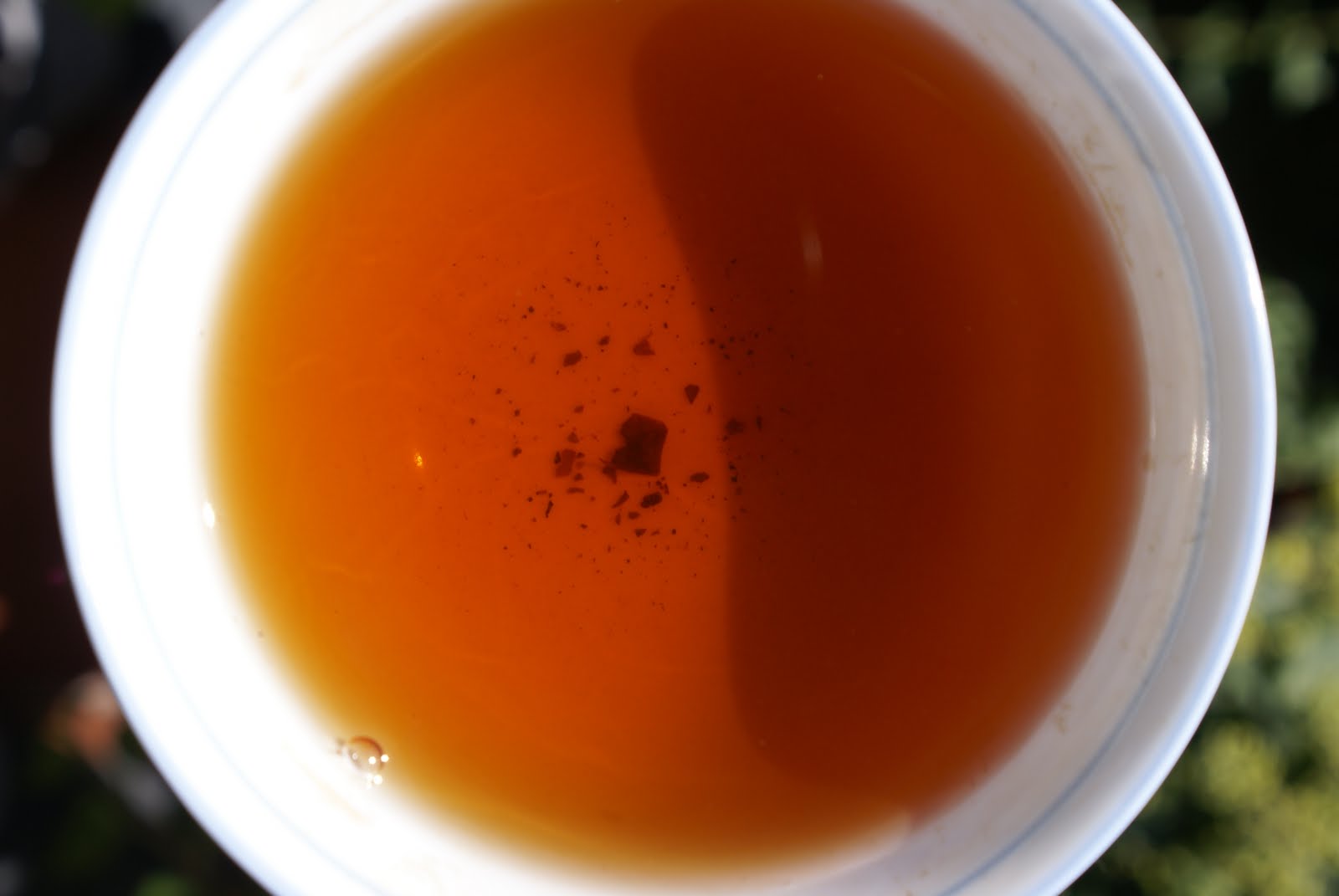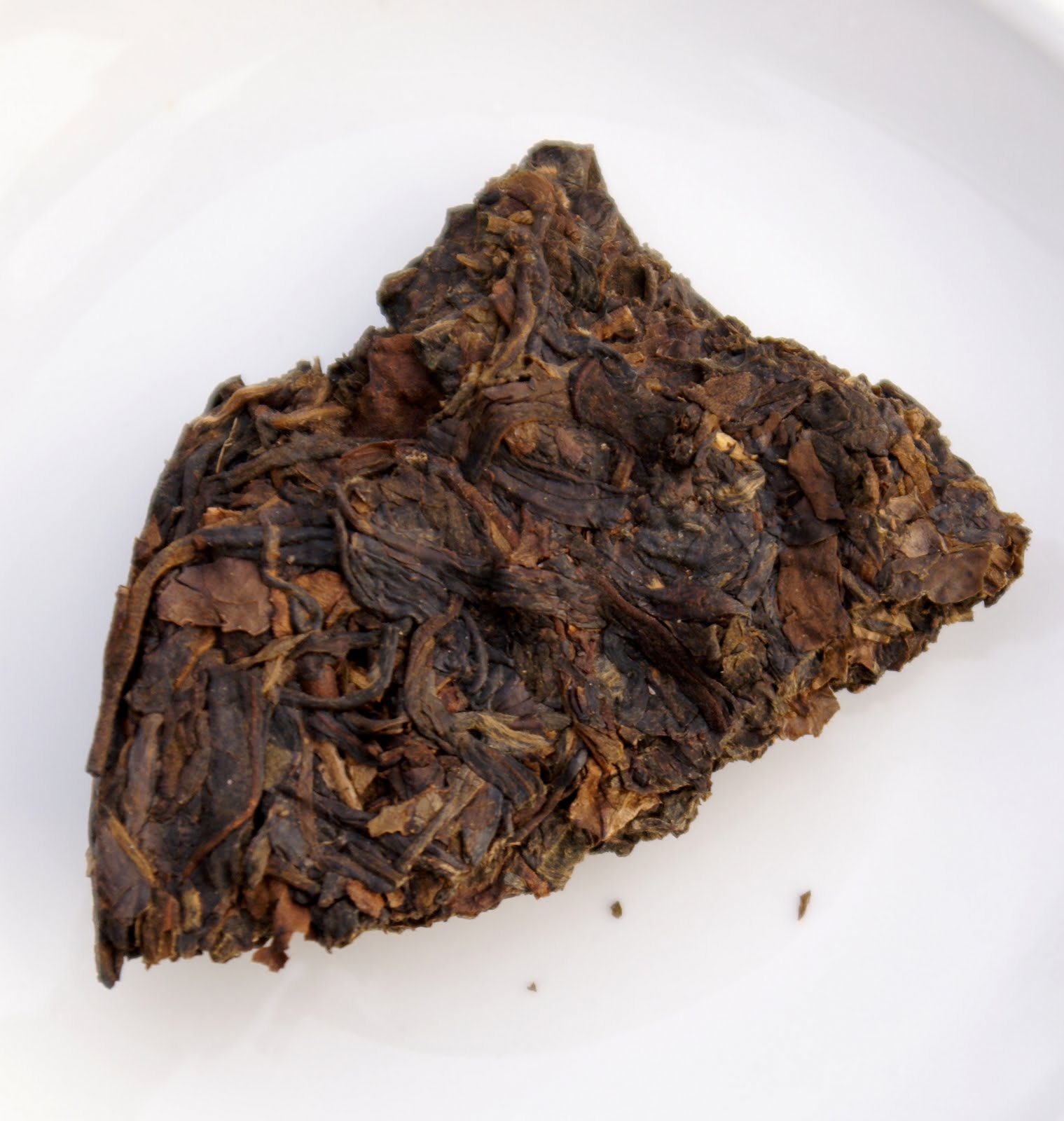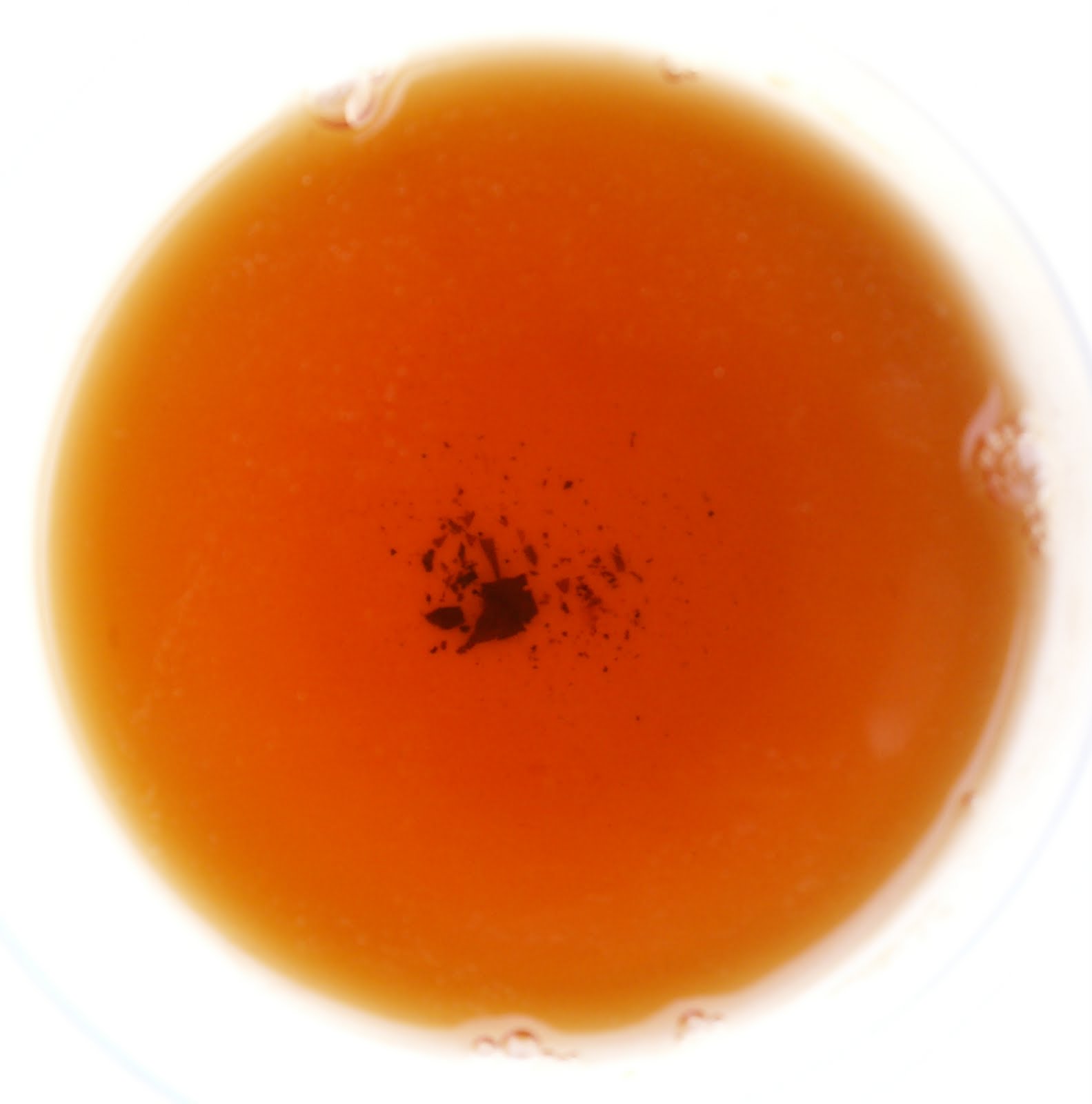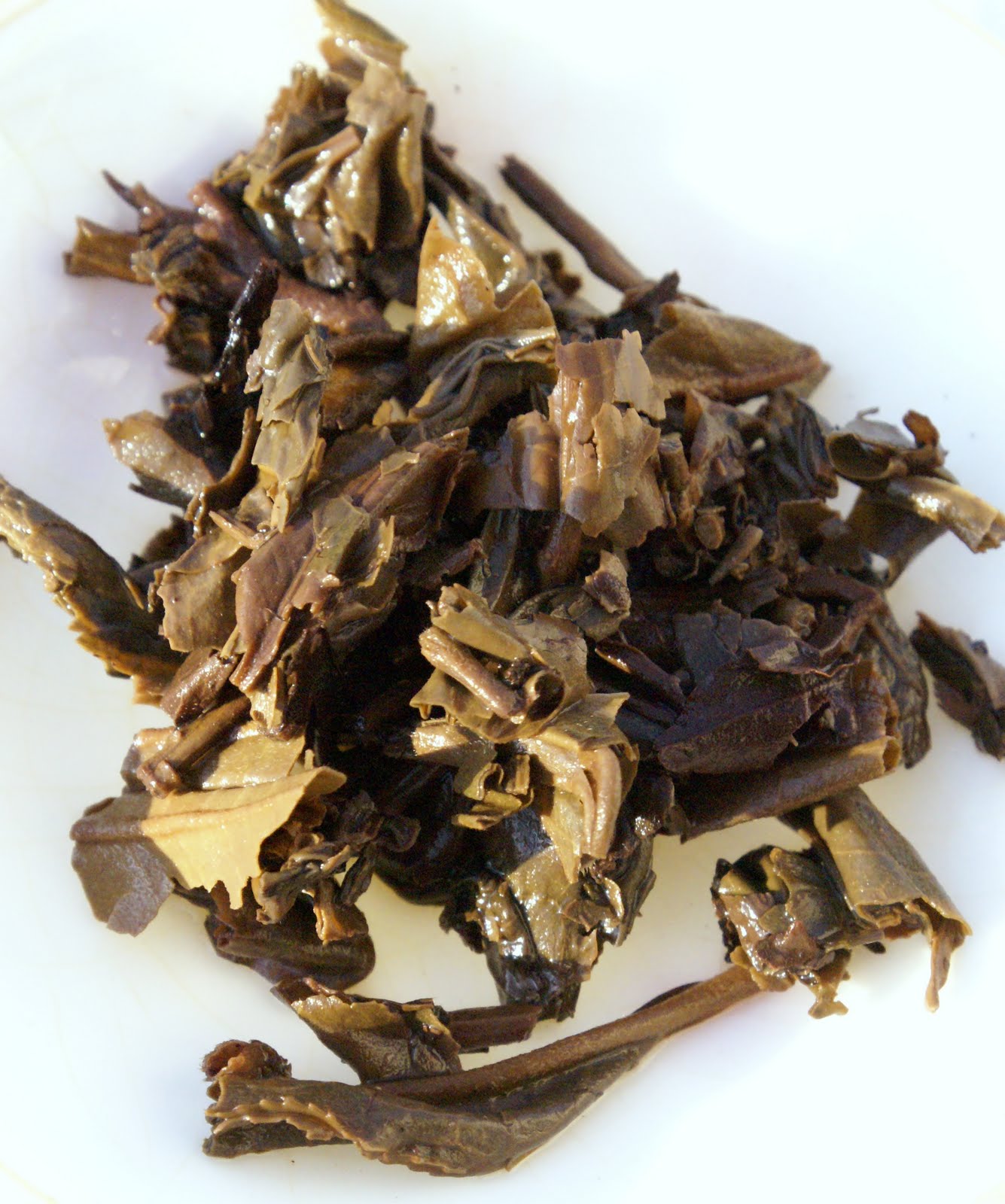Tasting tea blind
Posted on 30 September 2009
‘Blind’ tasting lies at the centre of wine assessment. Nowadays, whenever you taste a wine to give a judgment and profess about its merits (or lack thereof), you’re expected to do so ‘blind’ – meaning you don’t know what you are tasting. At least put a series of bottles into brown bags (in Poland, we use black socks), though real blind tasting should be ‘double-blind’: you’re not even supposed to have the vaguest clue about what wine types are possible. (This requires a full-time secretary with a wine degree to organise the tasting for you).
I dislike blind tasting. Profoundly so, in fact. Not only because on several occasions, I made a fool of myself by voting a Banfi Brunello as wine of the tasting (no joke). I dislike blind tasting because to an extent, all wine tasters make fool of themselves by accepting to reduce the wine to its ‘objective’ characteristics. Limpidity (who cares? But it’s a standard criterion on wine competitions), cleanliness of aromas, balance of tannins, ‘persistence’: as if, for example, the L’Inattendu white from Languedoc I blogged on recently could be fairly assessed through a set of technical parameters. I have experienced dozens of occasions where excellent bottles tasted bland and hollow when put in a series of twenty similar wines. Blind tasting is awfully reductive and its only theoretical advantage – that you assess a wine free of any bias – turns out to be an illusion: one bias (the label) is replaced by another (we are influences by elements we like, like a dark colour or a flowery bouquet).
In my book, the only real usefulness of blind tasting is to develop your own palate and tasting mind by making educated guesses. Tasting a single wine blind, you are forced to concentrate really hard on all its aspects: you have no reference points to assist you in your interpretation.
My palate for tea is that of a beginner, and I find blind tasting a truly useful exercise. It was an exciting perspective, therefore, to receive two unlabelled tea samples from fellow US tea drinker, Kimble22 (a.k.a. Shibumi – check out his blog here). I tasted them as analytically as possible (these were no pleasure sessions) and come up with approximate conclusions. Perhaps, looking at the photos and reading my descriptions, you’ll have better ideas: let me know as I’ll hold on posting the teas’ real identity (which I still don’t know) for a few more days.
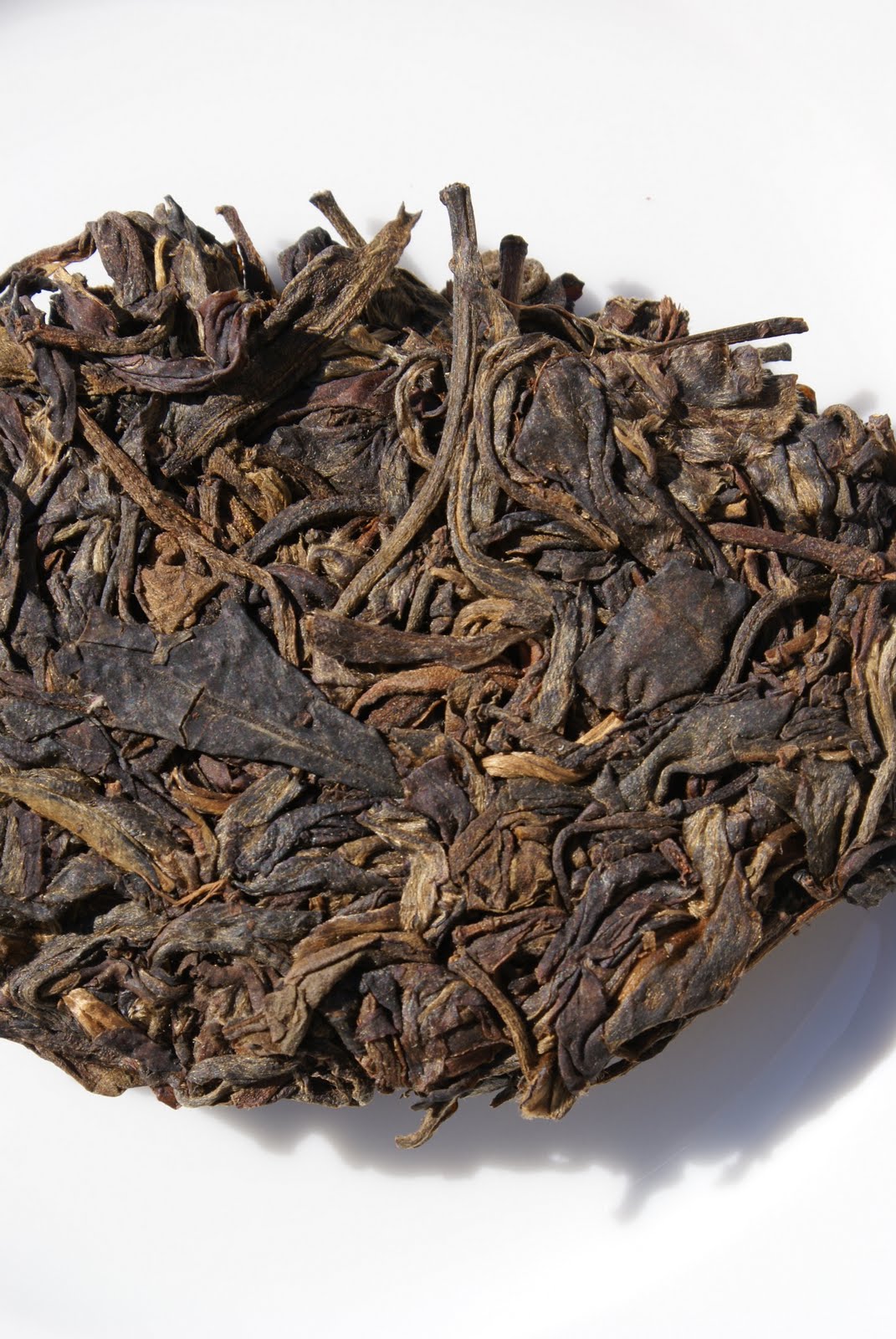
Mystery sample ‘A’
It comes as a generous chunk of compressed tea: this is obviously sheng [‘raw’] puer. Leaf size is average, with a proportion of tips. Compression is medium. A good-looking sample, showing some age: there’s little green to the colour, and a minor amount of dusty frosting on the consistently brownish leaves. Aroma leaf is very subdued: dominated by soft wet wood, with a bit of tobacco. Tobacco notes are reinforced when leaves are put in warm cup, but it’s a very low-key aroma. The dry leaf hints at a tea anything between 5 and 15 years of age I guess.
Colour of 5-minute competition brewing.
I brewed this tea twice: the first time ‘competition style’ (2g of leaf for 100ml boiling water, single 5-minute steep), the second time in 120ml yixing clay teapot where I’ve used 8g of leaf. It’s my personal record of dosage for this teapot, and it was clearly a bit too much (leaves had no room to fully unfold). The former session brought a subdued, sweet-fruity, not very powerful puer. A darker colour than expected, light brown (not orange or amber). Aroma has a high-pitched woody richness with hints of dried fruits and tobacco, hinting at its moderate age. Tannic power is moderate, and this seems almost completely resolved and mature. I like the balance here, and it’s definitely dry-stored: there’s not the merest hint of fermentative shicang. A harmonious and qualitative tea, and look at the spent leaves on the photo below. Really good quality, little fragmentations, larges leaves with a consistent medium brown colour. The easiest thing to guess here is the age: I reckon this is 8–10 years old, making it a tea from 1999 through 2001. To guess the origin takes a more experienced palate than mine but there’s an elegance and spiciness that reminds me of the Yiwu mountain teas. This tea doesn’t look like a large factory production.
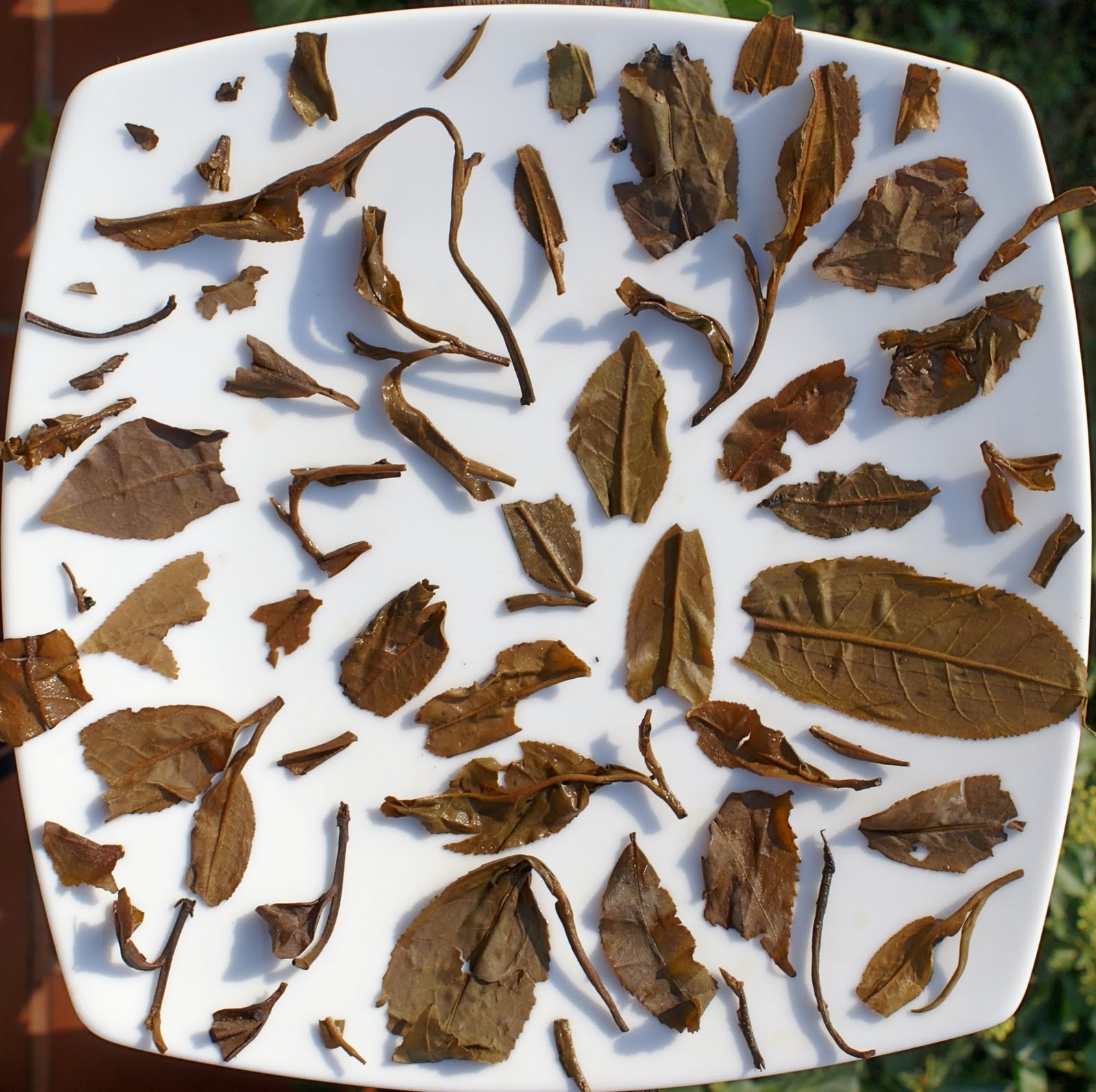
2 grams of leaf after 5 minutes of steeping.
The high-dosage yixing teapot session yielded no less than 15 satisfying infusions (25s, 10s, 7s, 10s, 30s, 50s, 1m, 2m30s and then at will). In summary, the tea showed a lot more power and reserve than suggested by the single long brewing. Through the initial brewings there’s a strong beany character dominating the profile, and a solid core of clean bitterness on end. Good length too, and the lack of fruit notes is interesting. Very good concentration (befits an 8g dosage), this is quite chewy. It is with brewings #4–5 that bone-dry beaniness is replaced with sweeter tobacco, and some sweet huigan making its appearance. Later brewings are consistently good, if perhaps never emotional. All in all this session shows a tea with a lot of stuffing (‘wild tree’? Perhaps) and still some way to go in terms of ageing. It might be younger than I initially thought: a 2001–2003?
Visually this is quite different from ‘A’. Small leaves, very tight compression; there’s a pattern on the surface of the sample like those that are pressed onto bricks, not cakes. A one-dimensional but very intense smokey aroma to the leaves.
As dark as this tea gets: colour after 5 minutes of infusion.
The ‘competition style’ brewing reveals a tea that’s obviously younger than ‘A’. Everything from the wet leaf (‘lid’) aroma through the colour of the brew down to the dryness of taste indicates a tea in that unsympathetic ‘middle age’: 3 to 7 years perhaps. Smoke, white beans, tannic grip, mint, strong young puer energy; this verges on an alkaliney, mildly animal aroma that for a lack of better descriptor, I call ‘sweaty’. It’s a tea with some power but really not very flattering at this stage.
Chopped leaves, smokey aroma: Xiaguan?
A session in yixing teapot (‘dahongpao’ clay) brings a consistent tea. It is very smokey throughout, and looking at the spent leaves, it reminds me obviously of the Xiaguan Tea Factory production: these leaves have gone through every possible torture and dismembration before being tightly pressed. Deep beige colours of mid-age, oily texture, a chewy mouthfeel and a kicking qi energy (courtesy of the high leaf fragmentation, too). This needs to age further to gain more complexity and anything like charm. A good tea. My educated guess: a Xiaguan brick (they’re more known for their tuocha but occasionally make some bricks too) from 2002–2006.
Read another interesting exercise in blind tasting on the Half-Dipper blog (
this and following posts). Please do leave comments here on what you think the above-described teas are. I’ll reveal their identity in 3 days’ time.
——————————————————————————————————-
Update 6th October 2009:
Kimble22 / Shibumi has now kindly revealed the identity of the above teas.
Tea ‘A’ is the 2003 Jinzhu Mountain. I have little information about this alleged ‘wild tree’ tea other than it’s reviewed here.
Tea ‘B’ is the 1999 Xiaguan Traditional Characters. It’s with the vintage of this that I missed the mark by the widest margin. I can be justified by the fact that the rock-hard compression of this tea makes for a much slower ageing than a standard puer cake: 2–3 years by decade is often the perceptive gap between actual and apparent age.



